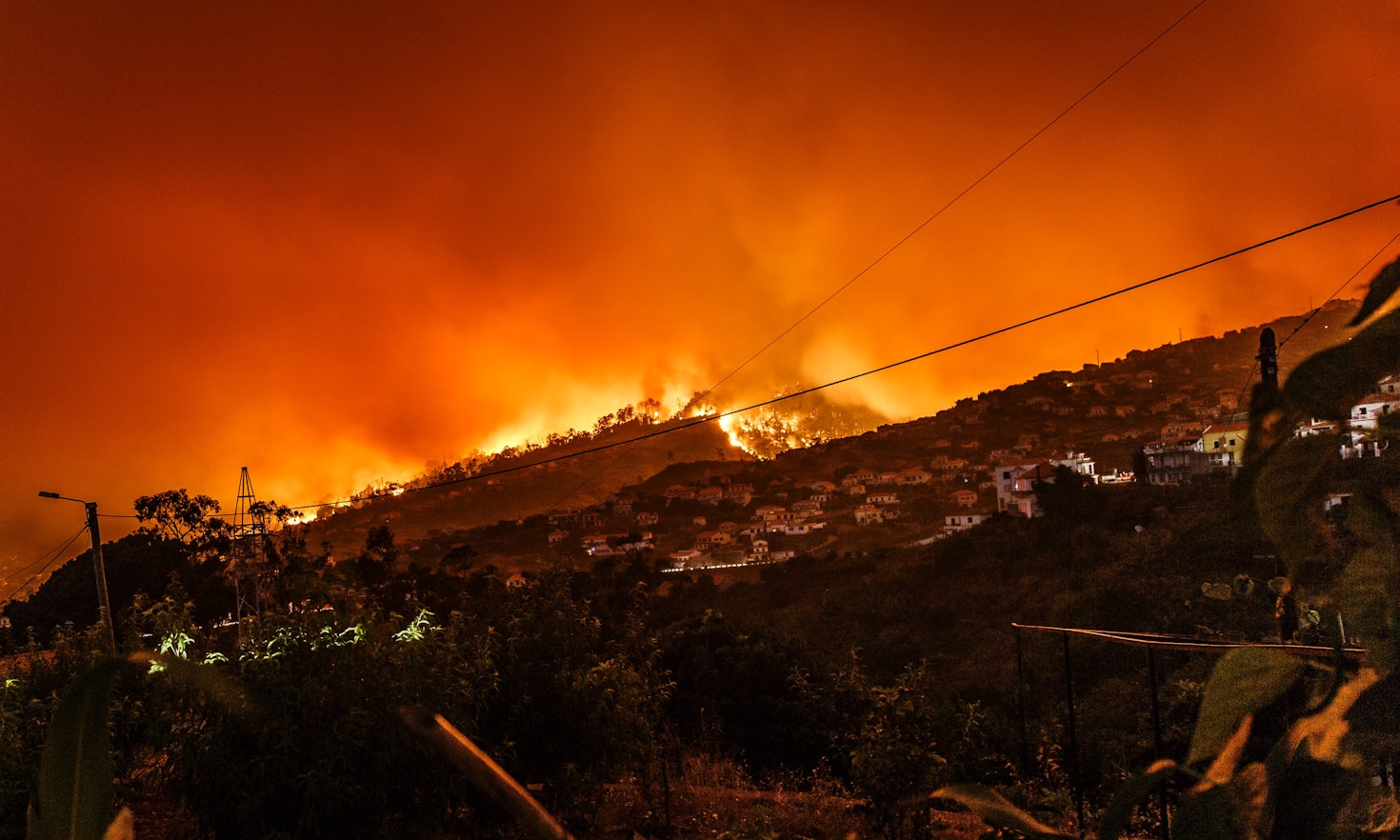The current situation of climate change integration in Trentino

As anticipated in the blog post by Federica Cittadino, there is a central but under-studied aspect in the fight against climate change: the implementation of effective mitigation and adaptation measures at the sub-national level. Climate governance, in fact, is taking on an increasingly global dimension and while this is essential for addressing such a wide-ranging issue, it should also manage to maintain some difficult geo-political equilibria.
Transnational governance is flanked and supported by the central role of nation states, in particular through NDCs (Nationally Determined Contributions), which - following the COP26 - must be updated every year instead of every five years. On the other hand, everything that happens at a sub-state level is still poorly investigated as well as being marginal in public, media and political debates.
As for the cases of the Autonomous Province of Bolzano/Bozen (South Tyrol) and the Austrian Länder of Tyrol and Vorarlberg, the "Climate change integration in the multilevel governance of Italy and Austria" research project collected and analyzed the main policy documents relating to climate change that were adopted by the Autonomous Province of Trento (Trentino) from 2005 to 2021. This was done with specific reference to three policy sectors: energy and water, transport and spatial planning. In addition, eleven interviews were carried out with key figures at provincial level: politicians, technical experts, administrative figures and representatives of civil society. The goal was to investigate not only the outputs produced, but also the processes, obstacles and solutions (formal and informal) identified to effectively integrate climate issues within sectoral policies.
The history of the fight against climate change in Trentino dates back several years. Beyond a generic interest that began in the second half of the twentieth century, it is only from some recent fundamental milestones marked by today’s transnational governance, that the topic acquired relevance for both local politics and citizens. In the documents analyzed, and especially in the narratives offered by the interviewees, the importance of certain international events was recognized, above all: the Fourth Report on "Climate Change 2007" by the IPCC, the Paris Agreements of 2015, the 17 SDGs identified by the United Nations and the European New Deal launched by the European Commission in 2019. In addition to the aforementioned events, the effect of some climatic/environmental disasters has also contributed to a strengthening of interest among the political class and society as a whole: in particular, both the collective memory of 2018’s storm Adrian and the Val di Stava Disaster of 1985 were prevalent. The joint stimulus of these elements has led to the development of an increasingly dense local legislation regarding mitigation and adaptation to climate change -, especially in more recent years. In particular, the Autonomous Province of Trento adopted "Trentino for climate protection", in 2010 - a specific law which was subsequently substituted in 2013 by the Environmental Impact Assessment Law of which article 23 - "Strategies and interventions of the Province to tackle climate change" was particularly relevant. Furthermore, Provincial strategy for mitigation and adaptation to climate change is currently being developed. This strategy should represent the future blueprint for guiding provincial administrative actions in identifying the measures to be integrated into the planning and programming of various policy sectors. Finally, the Provincial Sustainable Development Strategy adopted in October 2021, represents the overarching framework which the Provincial strategy for mitigation and adaptation to climate change relies upon.
The regulatory steps mentioned above, together with the more specific sectoral plans and initiatives carried out by individual departments, were enhanced by the definition of horizontal coordination lines that have improved over the years. The responsibility for coordination was initially entrusted to the Department of Civil Protection, and only recently assigned to the Provincial Agency for Environmental Protection (APPA hereafter). Among the various activities, APPA coordinated the works that led to the Provincial strategy for mitigation and adaptation to climate change. These works were conducted by the Provincial Coordination and Action Table on Climate Change, a provincial working group charged with the responsibility of coordinating the provincial bodies in their identification of appropriate mitigation and adaptation approaches as well as assisting with the development of a comprehensive strategy to propose to the Provincial Government. In addition to coordination activities in the development of provincial strategies, APPA is also a point of reference for communication and information activities relating to climate change. The identification of an agency as a reference point for climate issues has advanced the harmonization of processes and the achievement of common outcomes, which also contributed to the unification of the aforementioned three departments (energy and water, spatial planning and transport) under a single department, assessorato, namely that of planning, environment and cooperation. This restructuring of local governance has fostered better coordination processes between the various administrative bodies. An example discussed in depth in the interviews was that of the Energy and Environmental Plan of the Province: this was referred to not only as a milestone in terms of mitigation strategies, but also as a virtuous example of coordinated work between various departments and figures of the provincial administration. While 2013’s previous version was entrusted to an external consultancy firm, the 2021 version contains a specialist technical report drawn up by scientific experts and several chapters written by different provincial departments, with the Provincial Agency for Water Resources and Energy producing the majority of the content. Based on this integrated approach, a selection of the best practices was made at the interdepartmental level by the heads of various departments.
In addition to the measures implemented to promote horizontal and vertical coordination, several other elements emerged from the interviews. First of all, a lack of effective participation processes: some mechanisms aimed at involving citizenship do exist, but representatives of civil society organizations described them as more formal than substantial, characterized by a more communicative than deliberative nature. Some exceptions were mentioned, such as in the case of the Sustainable Mobility Law: however even in this case, despite the virtue of the co-construction process, civil society organizations were disappointed by the elimination of some of their proposals from the final version of the law, namely the requests fora rise in the annual budget of Trentino for the transport sector from 3% to 5%; free public transport and the foundation of a citizen's assembly to discuss policy issues.
Another essential aspect concerns the financial resources available. The interviewees unanimously agreed there had been a decrease in public funds, and consequently also on the actions to contrast climate change. In fact, it is sometimes difficult to distinguish laws or actions specifically aimed at climate change, but these aspects are included in plans and projects of the individual sectors and demonstrate effective mainstreaming of the issue. However, this implies that the general decrease in funds available to the administration also equates to less funds for the specific topic of climate change. This is clearly a negative aspect, but some interviewees also see a positive element in it: the scarcity of funds led to the development of effective solutions in the face of a scarcity of resources, forcing better performances and results with less at disposition.
Finally, a noteworthy element emerged during the interviews. Respondents are aware of living in a particular territory, which would have all the characteristics to be a reference point in the fight against climate change. This is due to the geographical peculiarities of Trentino and above all to the possibilities offered by nature of it being an autonomous province and the practices associated with this. This also has a double declination: on the one hand it means that delays or problems cannot be attributed to other levels of government (if not, in certain cases and for individual aspects, to the national level); on the other hand, it proves the virtue and courage of certain initiatives taken by Trentino which anticipated those subsequently implemented at the European level. However, according to several interviewees, especially among those belonging to environmental civil society organizations, autonomy is often limited by economic interests, as well as by a certain "provincialism" and the inability to emancipate from neighboring territories, the Veneto region and the Autonomous Province of Bolzano/Bozen in particular. However, such observations must not appear as a tout court negative judgment with respect to the actions developed in Trentino, but rather as a further stimulus to take advantage of the local peculiarities that act as a reference point in the fight against climate change and be used as an example for other sub-national governments.
To sum up: Trentino can be a frontrunner in the fight against climate change. Awareness of the issue is increasing both among citizens and politics as well as in the wake of European directives and transnational summits and objectives. New coordination mechanisms have been developed to integrate climate issues in sectoral policies and to increase effectiveness of the political action. But the road to mitigate and adapt to climate change is long and demanding, and some elements need to be strengthened and improved even more. The most important area for improvement is undoubtedly to have democratic participation in the construction of climate visions and climate policies. This should be done at every level, however the involvement of young citizens and training initiatives with schools and other socialization environments will be essential in the coming years. Funding is another undeniable fulcrum: Trentino has already proved its ability to “do more with less”, but in the future, climate should represent a priority in terms of public funding, beyond individual, parochial and category interests.

Citation
This content is licensed under a Creative Commons Attribution 4.0 International license except for third-party materials or where otherwise noted.






